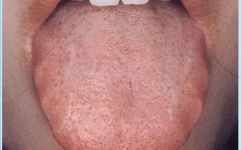

The tongue is the sprout of the heart, an external manifestation of the spleen, and the coating is produced by Stomach Qi . Tongue diagnosis primarily examines the quality and coating of the tongue, including its shape, color, moisture, and dryness, to determine the nature of diseases, the severity of the condition, the abundance or deficiency of Qi and blood, the balance of body fluids , and the deficiency or excess of the organs.
 Thickness of Tongue Coating
Thickness of Tongue Coating
01
Thin Coating – Mild Condition
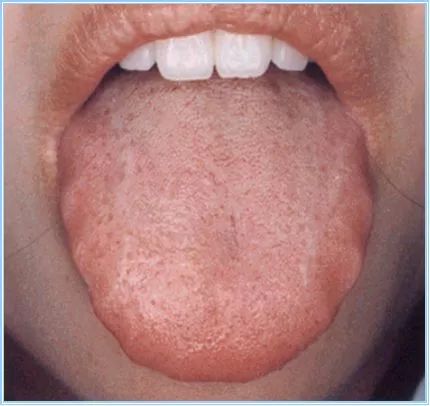
A thin white coating and a light red tongue are normal tongue appearances; a thin yellow coating primarily reflects the pathological characteristics of an initial heat syndrome.
This indicates a normal tongue coating or the onset of a disease, or shows a mild condition.
02
Thick Coating – Gastrointestinal Stagnation
If the tongue is red, with a yellow, thick, and dry coating, it indicates excessive heat in the Qi level damaging Yin; if it is a light red tongue with a thick, white, greasy coating, it indicates phlegm-dampness, turbid fluids, or food stagnation.
This indicates a progression from mild to severe condition, or the presence of gastrointestinal stagnation.
03
Dry Coating – Fluid Damage from Vomiting and Diarrhea
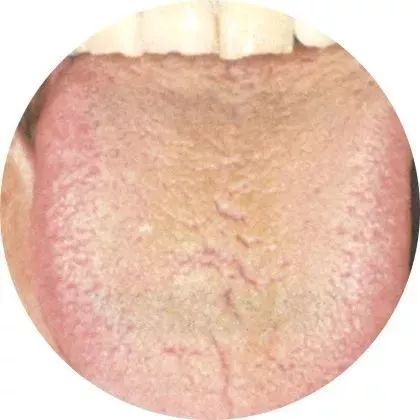
If the coating is merely dry and white, it indicates poor circulation of body fluids; if the coating is dry and yellow, it indicates excessive stomach heat damaging body fluids; if the coating is dry and black, it indicates extreme heat damaging Yin.
This generally indicates high fever and fluid damage from vomiting and diarrhea. It is also important to check the color of the tongue itself.
04
Rough Coating – Fluid Deficiency
If the dryness in the body becomes severe, it raises concerns about chronic conditions such as hyperlipidemia or diabetes, and individuals with asthma may experience difficulty breathing.
Rough coating indicates severe fluid deficiency.
05
Slippery Coating – Mental Fatigue
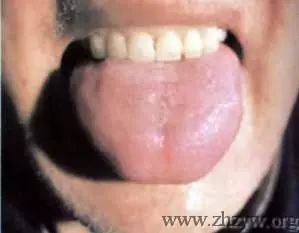
If the body is easily fatigued, with mental fatigue and lack of energy, it indicates a state of reduced bodily functions and lowered immunity.
This indicates deficiency syndromes and cold syndromes. It is also important to note the size of the tongue and the tooth marks on the edges of the tongue.
06
Greasy Coating – Dampness and Turbidity Accumulation
A white coating that adheres to the surface of the tongue indicates internal cold and excessive dampness; if the coating is yellow, it indicates dampness-heat or phlegm-turbidity accumulation transforming into heat.
This indicates dampness and turbidity accumulation, with Yang Qi being restrained, primarily indicating phlegm-dampness and food accumulation.
07
Putrid Coating – Excessive Internal Heat
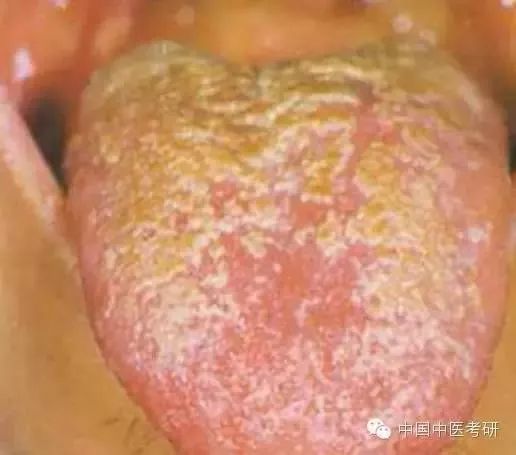
Be cautious of discomfort and infections caused by overeating.
Putrid coating is often associated with heat syndromes, primarily indicating food accumulation and phlegm-dampness.
 Color of Tongue Coating
Color of Tongue Coating 1
1 White Coating – Dampness and Turbidity
White Coating – Dampness and Turbidity
A thin white coating is a normal tongue coating or indicates the onset of an exterior syndrome. A thin white and moist coating indicates internal cold or cold-dampness; a thin white and greasy coating indicates dampness and turbidity.
Based on the moisture level and thickness of the coating, it can be categorized into thin white coating, white slippery coating, white dry coating, and white powdery coating.
2 Yellow Coating – Transformation from Cold to Heat
Yellow Coating – Transformation from Cold to Heat
A thin yellow coating indicates mild heat; a yellow coating indicates severe heat; a scorched yellow coating indicates extreme heat; a yellow greasy coating indicates damp-heat syndrome.
A yellow coating indicates diseases of the spleen and stomach, internal syndromes, and heat syndromes.
3 Gray Coating – Dampness and Turbidity Obstruction
Gray Coating – Dampness and Turbidity Obstruction
Once the tongue coating turns gray, it indicates that the disease has taken root in the body, and the condition has become serious.
A gray-white coating indicates cold-dampness or dampness and turbidity obstruction; a gray-yellow and dry coating indicates internal heat, damaging body fluids.
4 Black Coating – Intensified Pathogenic Heat
Black Coating – Intensified Pathogenic Heat
A black dry coating indicates the influence of chronic diseases or inflammation; a black greasy coating indicates excessive accumulation of pathogenic heat and dampness in the body.
A black coating indicates a more severe condition or a trend towards chronicity.
Organizing is not easy, the editor is truly dedicated.
Likes and shares are encouragement for me.
Follow and bookmark, it will be easier to find me.
⊙ Copyright statement: The article is sourced from the internet; if there is any infringement, please contact us for deletion.
⊙ Submission email: zytongue@126.com (We welcome your original submissions)
⊙ Cooperation QQ: 602052866 (Cooperation inquiries)
⊙ Official website: www.tongue.com.cn
Warm reminder: This platform shares health-related graphic and textual information for reference and learning only, and should not be used as a basis for medical diagnosis. If needed, please use under the guidance of a physician.
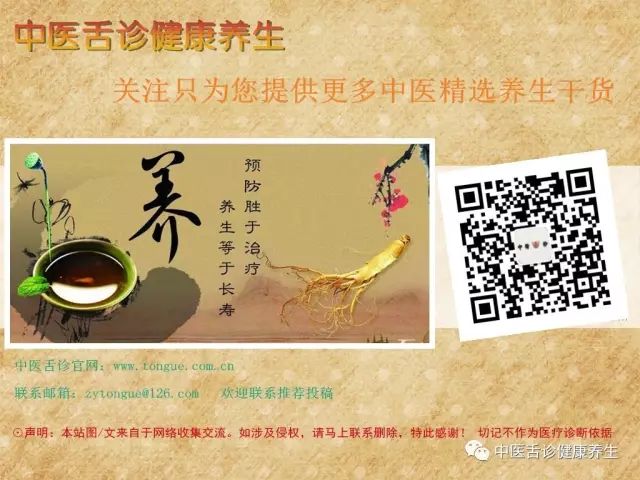
Do not keep it private, share it in your circle, let more people know! Wishing us all good health and longevity~
Everyone is looking at
Click the blue title below to read the corresponding good articles~
These tongue diagnosis tips will help you accurately grasp customer needs!
Acupuncture points are like Chinese medicine, meridians are like pharmacies! Super practical!
These types of tongue coatings indicate diseases!
The vast universe of tongue diagnosis
Understanding human health through the tongue
Classic analysis of tongue diagnosis for different constitutions!
Six methods of TCM to identify Qi and blood deficiency
This article teaches you whether to choose TCM or Western medicine for treatment
High-definition case illustrations revealing the secrets of tongue diagnosis
We simplify professional TCM knowledge to be understandable, practical, and effective for our health preservation path
Please pay more attention, share, and like. Thank you!
Reply with the number 1, Self-examination 2, Health preservation 3, Tongue diagnosis learning


